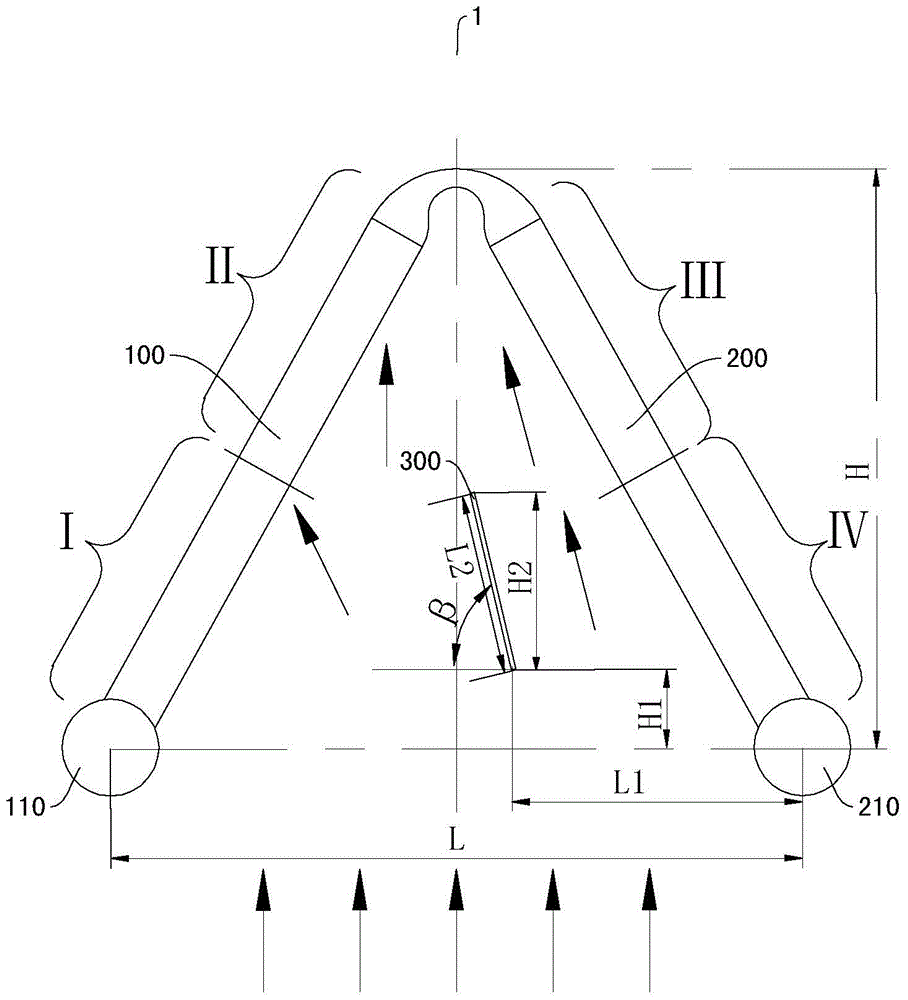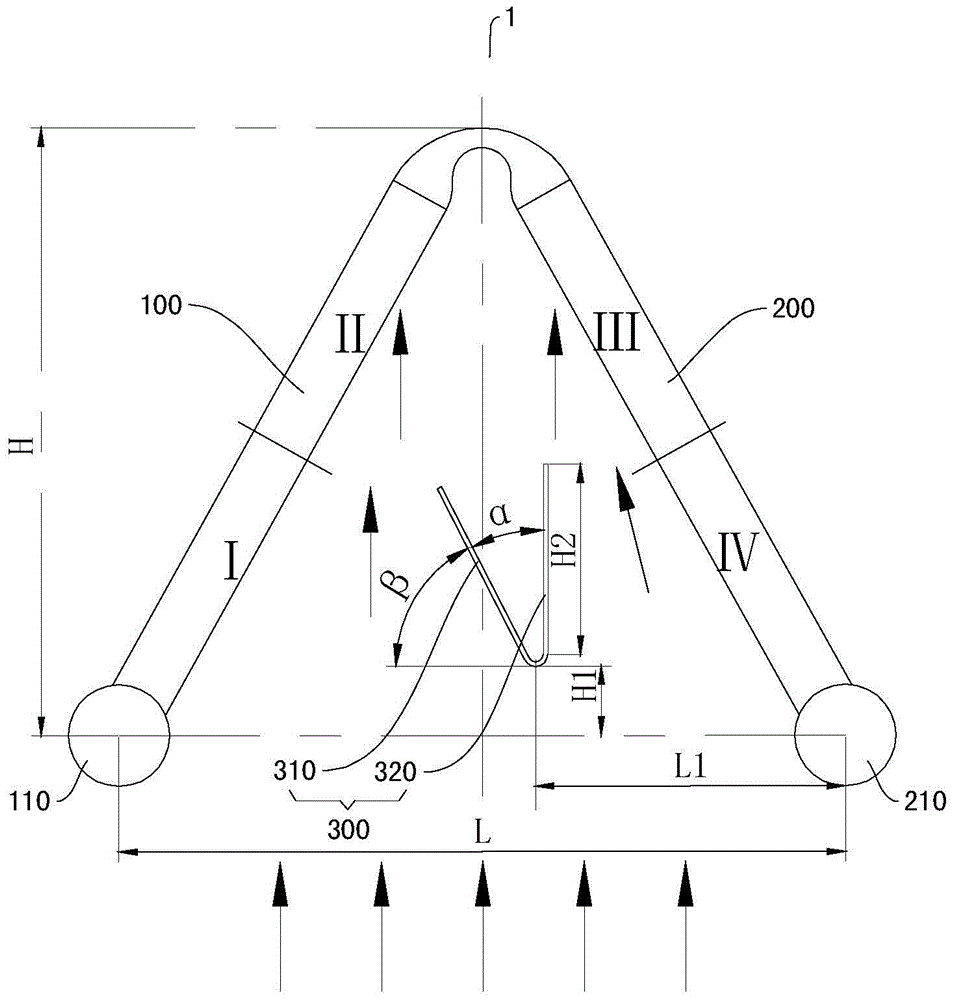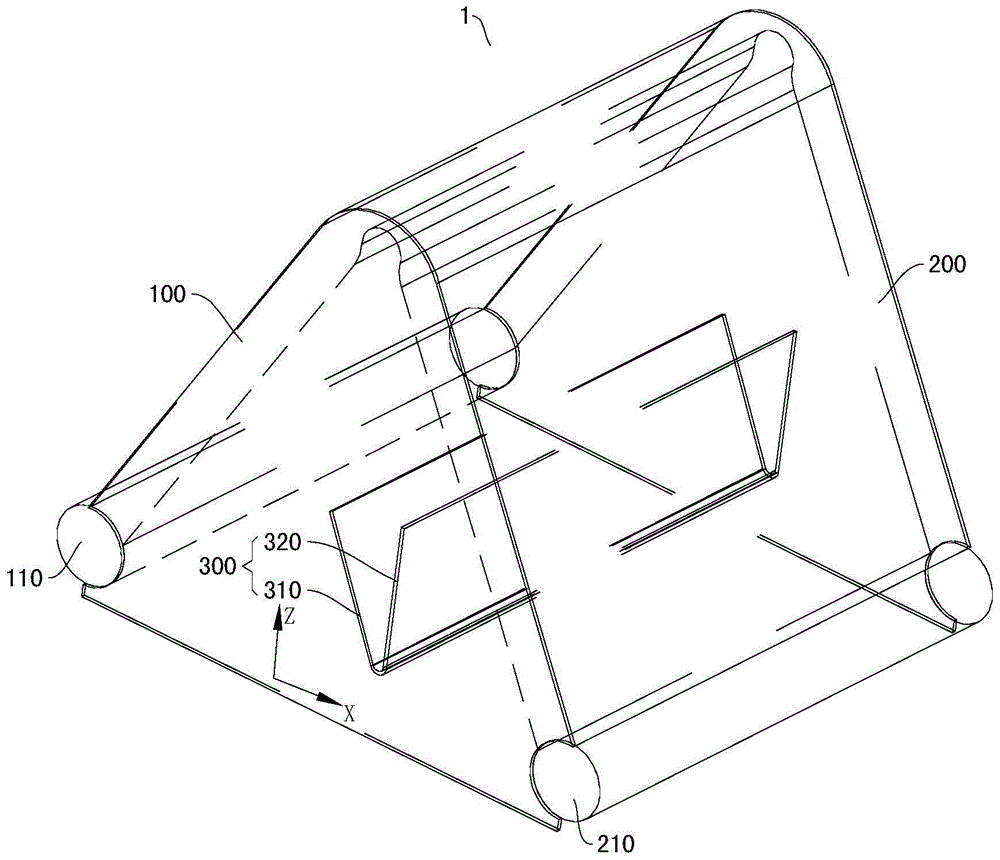Heat exchanging device
A heat exchange device and heat exchanger technology are applied in the directions of household heating, heating methods, household heating, etc., to achieve the effect of improving heat exchange capacity and improving the distribution of air volume (wind speed).
- Summary
- Abstract
- Description
- Claims
- Application Information
AI Technical Summary
Problems solved by technology
Method used
Image
Examples
Embodiment Construction
[0039] Embodiments of the present invention are described in detail below, examples of which are shown in the drawings, wherein the same or similar reference numerals designate the same or similar elements or elements having the same or similar functions throughout. The embodiments described below by referring to the figures are exemplary and are intended to explain the present invention and should not be construed as limiting the present invention.
[0040] The distribution uniformity of wind speed (air volume) on the surface of the heat exchange device has a significant impact on the heat transfer performance of the heat exchange device. Traditionally, for a substantially inverted V-shaped heat exchange device, an air guiding component is provided inside the heat exchange device so that the wind speed is evenly distributed on the heat exchange device. However, the inventors of the present application found that due to the different heat transfer coefficients of the refrigera...
PUM
 Login to View More
Login to View More Abstract
Description
Claims
Application Information
 Login to View More
Login to View More - R&D
- Intellectual Property
- Life Sciences
- Materials
- Tech Scout
- Unparalleled Data Quality
- Higher Quality Content
- 60% Fewer Hallucinations
Browse by: Latest US Patents, China's latest patents, Technical Efficacy Thesaurus, Application Domain, Technology Topic, Popular Technical Reports.
© 2025 PatSnap. All rights reserved.Legal|Privacy policy|Modern Slavery Act Transparency Statement|Sitemap|About US| Contact US: help@patsnap.com



